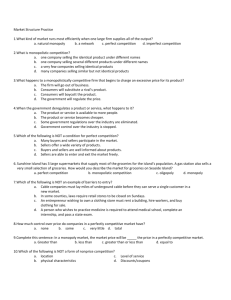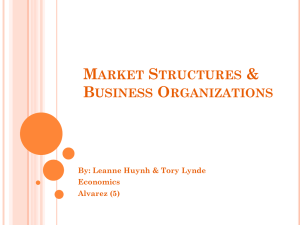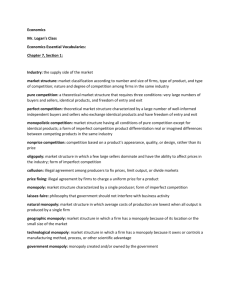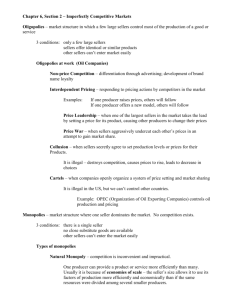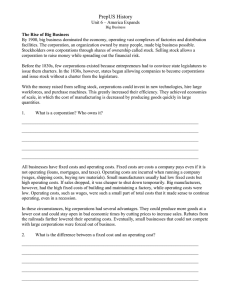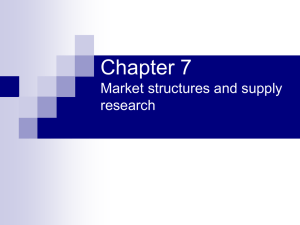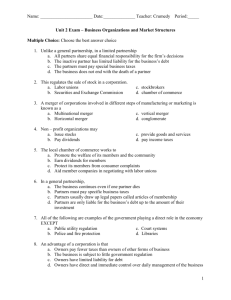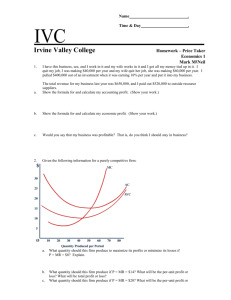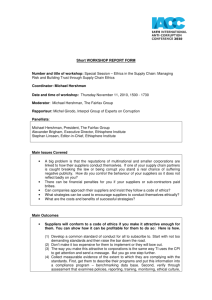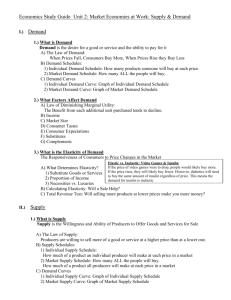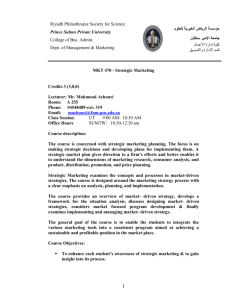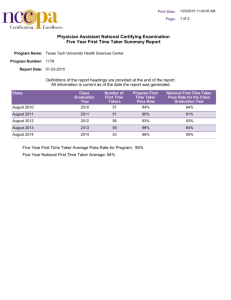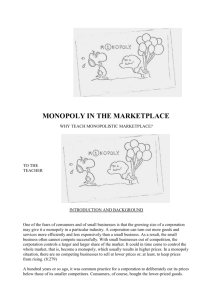Unit # 3: MARKET STRUCTURE INTRODUCTION
advertisement
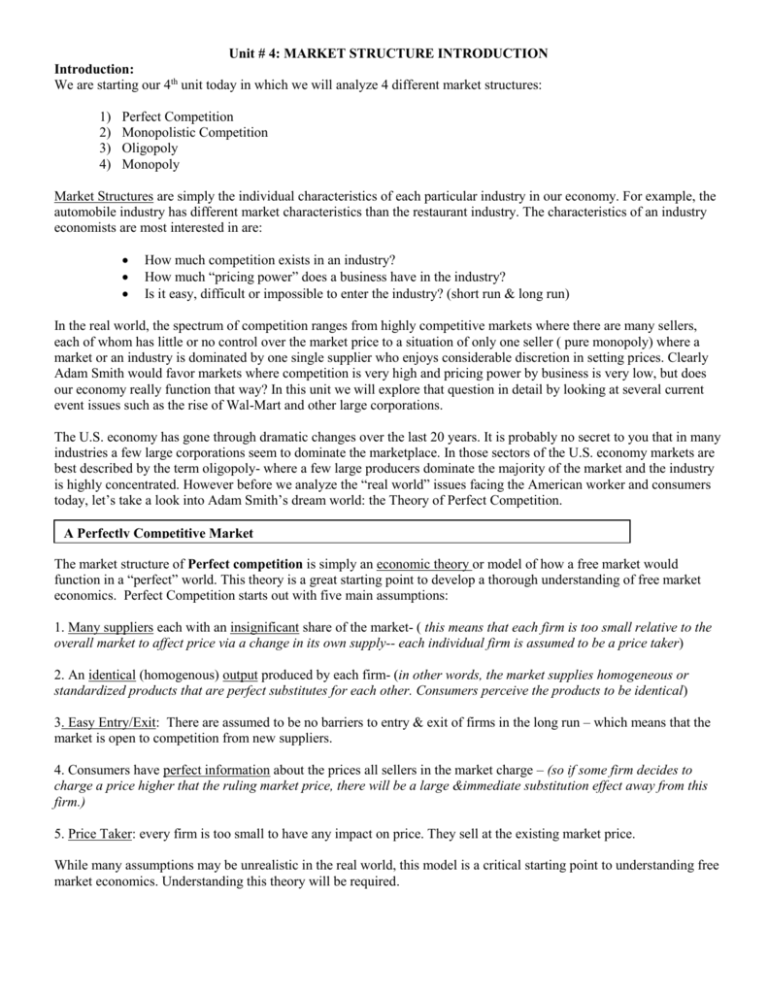
Unit # 4: MARKET STRUCTURE INTRODUCTION Introduction: We are starting our 4th unit today in which we will analyze 4 different market structures: 1) 2) 3) 4) Perfect Competition Monopolistic Competition Oligopoly Monopoly Market Structures are simply the individual characteristics of each particular industry in our economy. For example, the automobile industry has different market characteristics than the restaurant industry. The characteristics of an industry economists are most interested in are: How much competition exists in an industry? How much “pricing power” does a business have in the industry? Is it easy, difficult or impossible to enter the industry? (short run & long run) In the real world, the spectrum of competition ranges from highly competitive markets where there are many sellers, each of whom has little or no control over the market price to a situation of only one seller ( pure monopoly) where a market or an industry is dominated by one single supplier who enjoys considerable discretion in setting prices. Clearly Adam Smith would favor markets where competition is very high and pricing power by business is very low, but does our economy really function that way? In this unit we will explore that question in detail by looking at several current event issues such as the rise of Wal-Mart and other large corporations. The U.S. economy has gone through dramatic changes over the last 20 years. It is probably no secret to you that in many industries a few large corporations seem to dominate the marketplace. In those sectors of the U.S. economy markets are best described by the term oligopoly- where a few large producers dominate the majority of the market and the industry is highly concentrated. However before we analyze the “real world” issues facing the American worker and consumers today, let’s take a look into Adam Smith’s dream world: the Theory of Perfect Competition. A Perfectly Competitive Market The market structure of Perfect competition is simply an economic theory or model of how a free market would function in a “perfect” world. This theory is a great starting point to develop a thorough understanding of free market economics. Perfect Competition starts out with five main assumptions: 1. Many suppliers each with an insignificant share of the market- ( this means that each firm is too small relative to the overall market to affect price via a change in its own supply-- each individual firm is assumed to be a price taker) 2. An identical (homogenous) output produced by each firm- (in other words, the market supplies homogeneous or standardized products that are perfect substitutes for each other. Consumers perceive the products to be identical) 3. Easy Entry/Exit: There are assumed to be no barriers to entry & exit of firms in the long run – which means that the market is open to competition from new suppliers. 4. Consumers have perfect information about the prices all sellers in the market charge – (so if some firm decides to charge a price higher that the ruling market price, there will be a large &immediate substitution effect away from this firm.) 5. Price Taker: every firm is too small to have any impact on price. They sell at the existing market price. While many assumptions may be unrealistic in the real world, this model is a critical starting point to understanding free market economics. Understanding this theory will be required.
